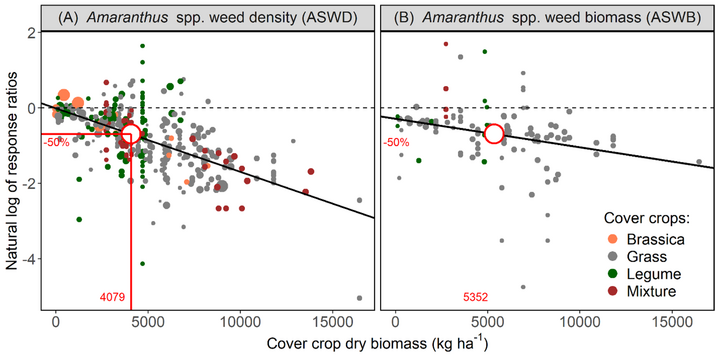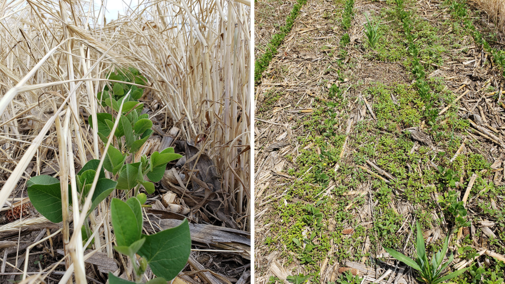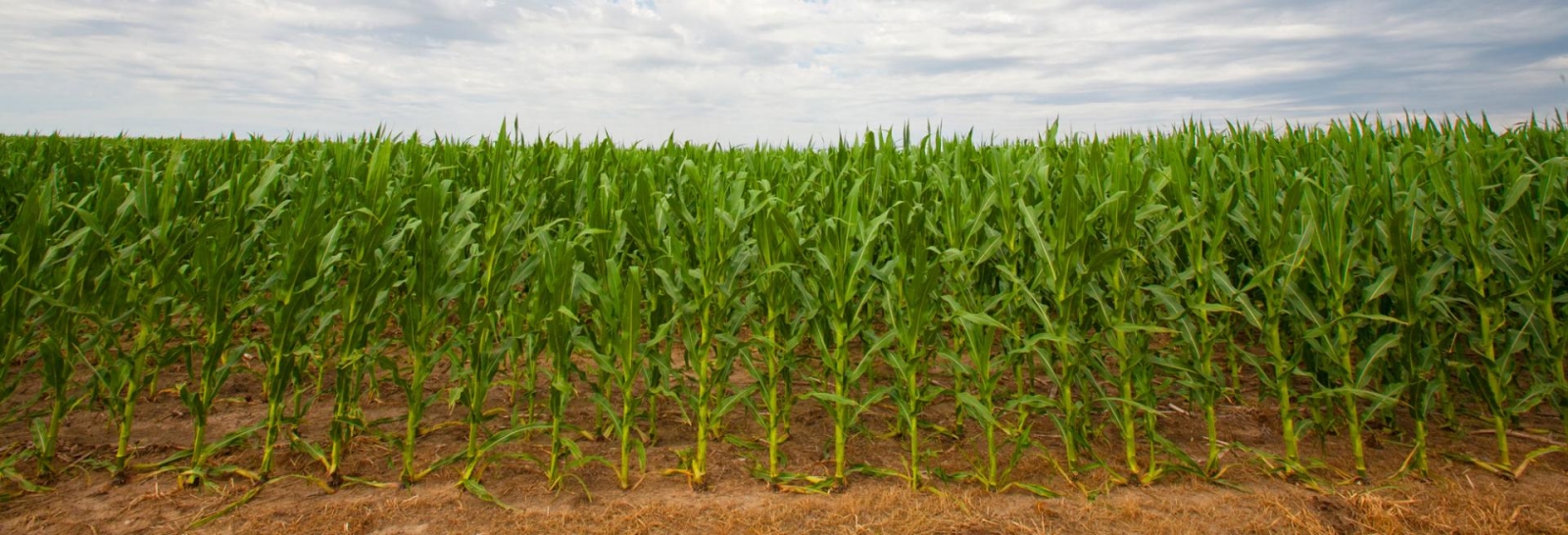Research Highlights
Cover crops cut pigweed pressure by 44–58%, but success depends on timing, species and termination strategy.
High biomass is key — aim for over 5,000–6,000 lb/ac for the best suppression.
Cereal rye works best in Nebraska, especially when fall-planted and terminated late.
Smart herbicide integration with cover crops improves consistency and may reduce pre-emergence use.
Match species and strategy to your rotation and equipment for effective implementation.
Pigweeds are among the most difficult weeds to manage in row crop systems due to their rapid growth, high seed production and widespread herbicide resistance. Over the past two decades, reliance on herbicides for weed management has led to the evolution of resistance in Palmer amaranth populations to several herbicides, particularly ALS, glyphosate and PPO-inhibitors. This reality has intensified the need for integrated weed management strategies, including non-chemical practices such as cover crops.
Recent research from the University of Nebraska–Lincoln sheds light on how cover crop management decisions such as planting time, species selection and termination timing influence pigweed (Palmer amaranth, waterhemp, redroot pigweed and smooth pigweed) suppression. In a comprehensive meta-analysis of 41 field studies conducted across the U.S. and Canada from 1994 to 2024, we evaluated how various cover crop strategies affected the density and biomass of pigweed species, with an emphasis on Palmer amaranth, waterhemp, redroot pigweed and smooth pigweed.
What the Data Show: Cover Crops Work — But Management Decision Matters
The meta-analysis, which included more than 100 site-years of data from across the U.S. and Canada, found that cover crops significantly reduce pigweed emergence and growth. However, their effectiveness depends on how and when they are managed.
Key findings include:
- Cover crops reduced the pigweed density by 58% in the early season (0 to four weeks after crop planting [WAP]), by 48% in the midseason (5 to 8 WAP), and by 44% in the late season (>8 WAP).
- Cover crops reduced pigweed biomass by 59% in the early, 55% in the midseason, and 37% in the late season.
- Among cover crop types, grasses and mixtures reduced pigweed density by 60% and 77% in early season, 53% and 59% in midseason, and 44% and 47% in late season. Legume cover crops were effective only during the early season (47% reduction), while brassicas did not affect pigweed density.
- Cover crop residues remaining on the soil surface were more effective for pigweed suppression than incorporation.
- Cover crop biomass was a critical factor. Treatments producing higher biomass provided higher pigweed suppression.
Why Cover Crop Biomass Matters
One of the strongest correlations observed in the meta-analysis was between cover crop biomass and pigweed suppression. Higher biomass creates a thicker mulch layer on the soil surface, which can reduce sunlight penetration, interfere with seedling emergence and delay pigweed growth. Moreover, some cover crop species (especially cereal rye) release allelopathic compounds that further inhibit small-seeded weeds like pigweed. The results suggests that growers should aim for more than 5,000-6,000 lb ac–1 biomass to get better pigweed suppression.
As such, management practices that promote robust cover crop growth — such as early fall planting, delaying spring termination and choosing high-biomass species like cereal rye — are critical for maximizing weed suppression benefits.

Practical Takeaways for Nebraska Farmers
In Nebraska, cover crops are already gaining traction for improving soil health, reducing erosion and enhancing nutrient cycling. This new research reinforces their role in herbicide-resistant weed management.
Five Key Takeaways for Nebraska Growers
Fall-plant cereal rye for best results. Cereal rye, when planted by late September or early October, consistently produces enough biomass by spring to suppress pigweeds. It’s winter-hardy and can be easily terminated with standard herbicides.
Terminate late, if possible. Delaying cover crop termination until corn or soybean planting (or slightly after) allows for more biomass accumulation. Our meta-analysis showed the best suppression occurred when cover crops were terminated at or after planting (a practice commonly referred to as "planting green").
Integrate herbicides smartly. While cover crops alone can reduce Palmer amaranth, combining them with herbicides provides the most consistent control. In high-biomass scenarios, growers may be able to reduce or skip the pre-emergence herbicide, which reduces expenses and selection pressure, but this should be evaluated on a field-by-field basis.
Monitor residue and soil coverage. Dense cover crop stands can sometimes interfere with herbicide placement. Ensure good seed-to-soil contact and adjust sprayer settings to account for residue interception, especially with soil-applied herbicides.
Match cover crops to your rotation and equipment. While cereal rye is a top choice for soybean systems, other species like oats, barley or multi-species blends can also contribute to weed suppression. Termination timing, equipment compatibility and planting conditions should all guide your choice.
What This Means for Herbicide-Resistant Weed Management
Incorporating cover crops into weed management plans is not just about reducing weed density — it’s a long-term investment in slowing the evolution of herbicide resistance. Every weed that doesn’t emerge because of cover crop residue is one less exposed to herbicide selection pressure.
With pigweeds evolving resistance to multiple herbicide sites of action across Nebraska and surrounding states, the need for non-chemical suppression strategies has never been greater. This study provides strong evidence that cover crops can reduce weed pressure and herbicide dependence, especially when combined with strategic herbicide programs.
Looking Ahead
As climate variability increases and weed populations become more difficult to manage, resilient systems will rely on multiple layers of defense, and cover crops are a foundational tool in that strategy. Continued research at the University of Nebraska is focused on optimizing cover crop integration in real-world cropping systems, including ongoing trials on spring-seeded oats and barley, cereal rye termination timing, and the impacts of cover crops on soil health and water retention.
For growers considering cover crops for weed management, now is the time to act. Early planning, seed sourcing, and seeding logistics can make the difference between a successful stand and one that provides little benefit.
Reference
- Kumar V, Singh M, Thapa R, Yadav A, Blanco-Canqui H, Wortman SE, Taghvaeian S, Jhala AJ (2025). Implications of cover crop management decisions on Amaranthus species density and biomass in temperate cropping systems: a meta-analysis. Weed Science 39(e41), 1–17. https://doi.org/10.1017/wsc.2024.99

